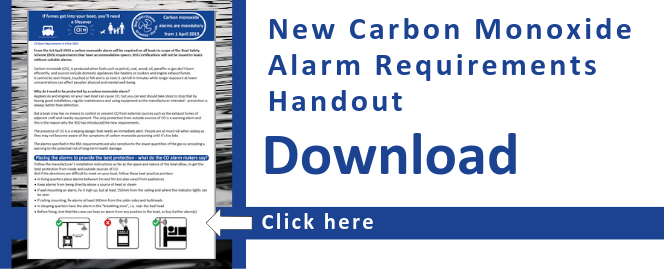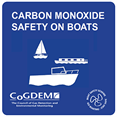Carbon Monoxide (CO) - test
The BSS has just published a new handout as an essential guide to all the new requirements and background information. It covers what is required and how the checks will be carried out by BSS Examiners and how the alarms will help keep crew members safe, including:
- CO alarm makers guidance about where to place a CO alarm to achieve best protection,
- What type of CO alarm to buy,
- What to do if a CO alarm goes off,
- What to do if carbon monoxide poisoning is suspected.
Many people don’t realise the dangers of Carbon Monoxide poisoning, or CO as it’s known. It only takes one faulty appliance, blocked flue or a build-up of engine exhaust gas to potentially harm you and your family. This series of videos helps you understand the what Carbon Monoxide is, the symptoms of CO poisoning, how to choose the right alarm to protect you and your family, and importantly what do if your alarm goes off.
What is Carbon Monoxide, and how does it occur?
The Symptoms of Carbon Monoxide Poisoning
Choosing the right Carbon Monoxide alarm?
What to do if your Carbon Monoxide Alarm goes off
"Each year boaters die or are made seriously ill from carbon monoxide (CO) poisoning - Boats are built to keep water out, but this also makes them good containers for gases and fumes."
When carbon-based, appliance and engine fuels, such as gas, LPG, coal, wood, paraffin, oil, petrol and diesel don't burn completely, CO is produced.
CO build-up in the cabin can occur with one or a mix of these factors:
- with faulty, badly maintained, or misused appliances
- exhaust fumes from a boat's engine or generator
- escaped flue gases from solid fuel stoves
- short supply of air - fuels need the right amount of oxygen to burn safely
10 tips to keep you and your crew alive!
For more detail read the information on the pages linked by the buttons on the left, |

A list of alarm models tested to BS EN 50291-2 and stated as suitable for boats by their manufacturers. [Click] |











